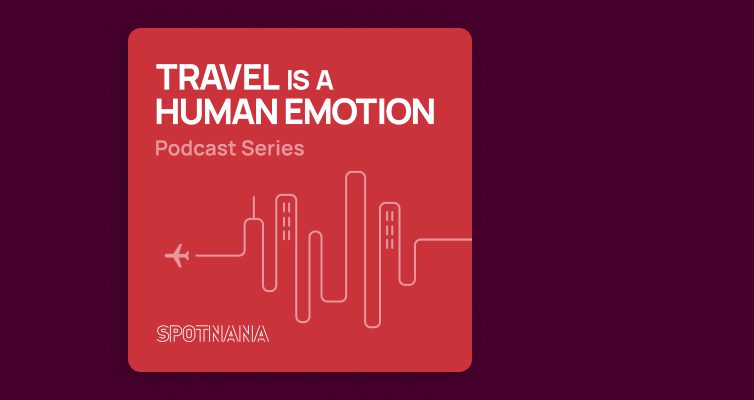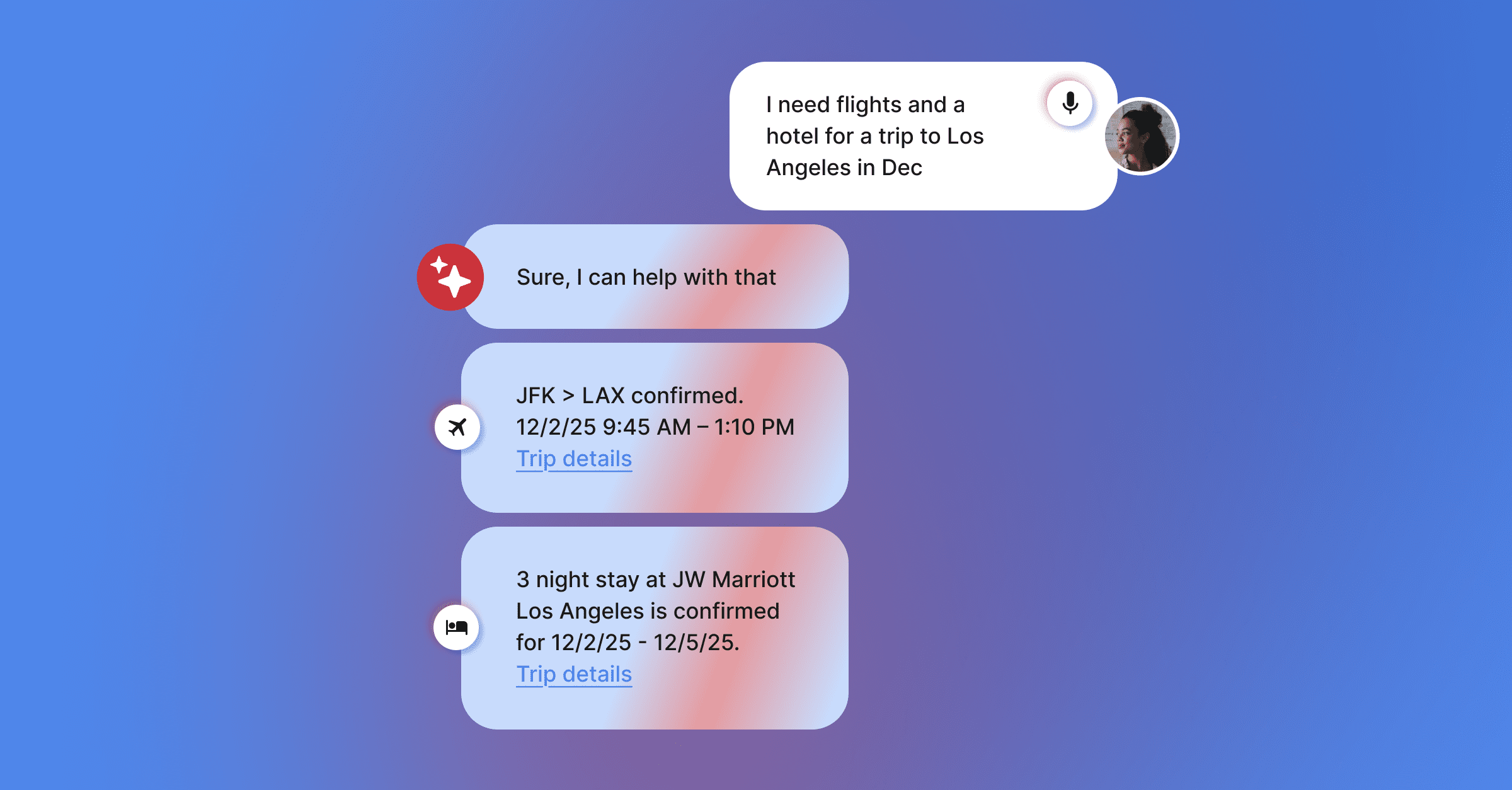Designing the future of travel interfaces
A major shift is happening in travel.
For decades, the design of travel applications has been anchored in static forms and transaction-first thinking. Now AI is opening up new opportunities to reimagine how travel is booked, managed, and serviced.
We believe travel interfaces will evolve from static destinations to dynamic AI companions that understand a traveler’s preferences, provide assistance without intrusion, and create holistic experiences instead of segmented itineraries.
The shift: From screen-centric to conversation-centric
In the next few years, the most profound change in the travel user experience will be the disappearance of the user interface as we know it. For most travel bookings, we expect:
- AI will become the UI: Conversational layers will replace dropdown menus and forms.
- Multimodal experiences will become seamless: Voice, vision, and context-aware inputs work together, enabling travelers to transition effortlessly between different modes of engagement.
- Proactive experiences will become ubiquitous: The system will anticipate needs before you express them.
The world will move from reactive design (“you click, we respond”) to agentic design (“we sense, we serve, we surprise and delight”).
While current modes of booking won’t disappear overnight, they will be used by a decreasing minority of users and for a shrinking fraction of use cases.
The evolution of the travel interface
Below is our vision for how Spotnana will move from legacy booking flows to AI-driven journey orchestration:
1. Conversational interfaces
Today, travelers are used to traditional online booking tools that are clunky and hard to navigate, making it difficult to find the best in-policy booking options.
The search process begins with a form. When search results are displayed, the user sees an overwhelming number of options, and they often must manually apply filters to find what they’re looking for. Several clicks later, a selection is finally made, and then several more steps must be taken to complete the purchase.
Now imagine an experience where a traveler simply uses natural language to state their request: “Find me a flight to Tokyo next Friday, but only if I can use my United credits and avoid a redeye.”
In the future, Spotnana will be able to run a tailored search using data from a traveler’s calendar, profile, and policy as key inputs, automatically negotiate with suppliers to find applicable fares, and return curated results instantly that can be booked through whatever interface the traveler happens to be using.
2. Contextual and situational awareness
Traditional travel systems have no awareness of where a traveler is, and therefore no ability to recommend, personalize, or triage elements of a journey.
As travel systems integrate location data, calendar data, and other types of information they will acquire enhanced contextual and situational awareness.
In time, Spotnana will have the ability to know what time your meeting ends, whether your train is delayed, and if your preferred restaurant has a last-minute table available. Synthesizing this type of data and identifying key opportunities to enhance the traveler journey will be a crucial benefit of our agentic design.
3. Journey-oriented design
Travel providers today don’t have permanent traveler IDs to know who a traveler really is, or journey information to know what the goal of a trip is, or understand what will make the trip most successful for a traveler.
Rather than siloed booking flows, we will design for the entire journey lifecycle, including pre-trip discovery, active journey management, and post-trip data capture. Every micro-interaction will be engineered to reinforce trust, reduce friction, and spark moments of joy.
A call to travel designers
Whether you are designing for a TMC, an airline, hotel, ground transportation or a leisure platform, consider that travel design in the AI era is about:
- Understanding human intent at a granular level.
- Building systems that adapt in real time.
- Balancing automation with moments of human warmth.
The interface is no longer the destination. It’s the invisible bridge between traveler and experience. Every pixel, every prompt, every notification is part of the journey’s emotional architecture.
The future traveler will judge your design not by how it looks, but by how it feels and how well it anticipates their needs. Success will not be measured in clicks, screens, or page views—it will be measured in moments saved, experiences enhanced, and memories made.
At Spotnana, we are designing for this future. We want to create a world where travel doesn’t feel like booking—it feels like being understood.
Want to join us on our journey to bring agentic design to the world of travel? Get a demo today or check out our careers page.






